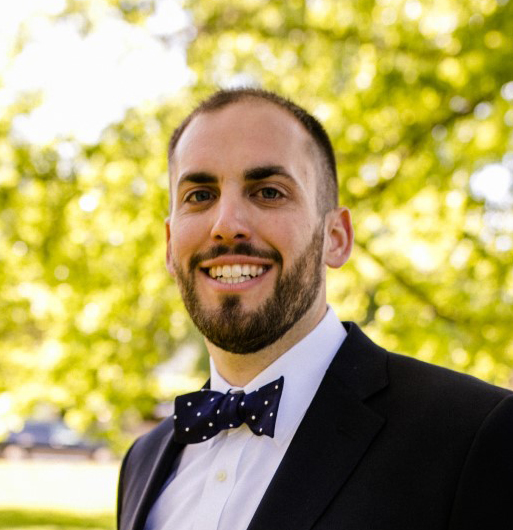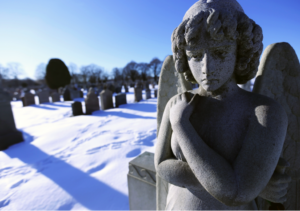American Ancestors recently announced a new database: Massachusetts: Catholic Cemetery Association Records, 1833-1940. This partnership between NEHGS, the Roman Catholic Archdiocese of Boston, and the Catholic Cemetery Association of the Archdiocese of Boston (CCA) makes available newly-digitized lot sale and burial records as well as cemetery maps to aid researchers. The records of thirteen cemeteries are currently available to search, with more cemeteries to be added to this database throughout the year. This new database encouraged an investigation of the history of cemeteries and cemetery associations in the archdiocese, resulting in a brief history of the CCA.
The origins of the CCA can be found in the Roman Catholic Cemetery Association (RCCA) incorporated by the Commonwealth of Massachusetts on 19 May 1868. It permitted the members of the corporation – Archbishop John J. Williams, Father George A. Hamilton, and Father George F. Haskins – to obtain up to 100 acres of land in Malden, Massachusetts “for a rural cemetery or burial ground, and for the erection of tombs, cenotaphs or other monuments, for or in memory of the dead.” Furthermore, the association held “the authority to grant and convey to any person or persons, sole and exclusive right of burial in any of the aforesaid lots.”
The cemetery would become the final resting place for Catholics throughout the region, not just those in Malden and the immediate area.
*
The RCCA evolved during the tenure of Cardinal William Henry O’Connell, Archbishop of Boston from 1907 to 1944, who began consolidating the archdiocesan administration. On 15 January 1910, members of the RCCA signed articles of agreement stating all “rights, franchises, privileges, lands, tenements, hereditaments, real and personal estate, easements, choses in action, assets and property of every kind and description, name or nature belonging to this corporation … shall be assigned, transferred, conveyed and set over to the Roman Catholic Archbishop of Boston, a corporation sole” and be passed to his successors in that role.
The act brought the RCCA into conformity with canon law, which required diocesan property to be held in the name of the archbishop. Because the land was in his name, the archbishop often found himself named president or treasurer of various cemetery associations. For example, a list of RCCA officers from the 1940s shows Cardinal O’Connell serving as president, treasurer, and director; Msgr. Michael J. Splaine as clerk and director; and Msgr. Richard Haberlin as director.
Another initiative during Cardinal O’Connell’s tenure was providing for the perpetual care of the cemeteries. On 1 December 1927, he expressed his displeasure at the elaborate caskets, flower arrangements, and pomp with which funerals and burials in Catholic cemeteries were being conducted. What he found most appalling was that after such great displays the resting places of those interred had the appearance of being neglected.
Rather than absorb the costs associated with these scenes, he instead urged all pastors and superintendents to require lot owners to invest in a special trust for the perpetual care and maintenance of the cemetery grounds.
*
Cardinal O’Connell was succeeded by Cardinal Richard J. Cushing in 1944, and four years later Cardinal Cushing created the Office of the Director of Cemeteries, effecting the dissolution of the RCCA. This was announced via a 22 January 1948 memorandum establishing “effective immediately … a Diocesan Director of Cemeteries with a central office for the clearance, within the provisions of civil and ecclesiastical law, of questions pertaining to the interests and the care of diocesan and parochial cemeteries.”
Cardinal Cushing continues: “[The] deplorable condition of many of our diocesan cemeteries prompted the appointment of such a director. It is hoped that with his assistance we may be able to at last to accomplish genuine reforms in the maintenance of the cemeteries subject to our jurisdiction. At the very least, a central office will be able to investigate the constant complaints of lot-holders in our own cemeteries and to obviate in some measure the widespread criticisms of the poorly-kept resting places of our faithful departed.”
"It is hoped that ... we may be able to at last to accomplish genuine reforms in the maintenance of the cemeteries subject to our jurisdiction."
Problems included “sunken graves, accumulated litter, uncut grass, toppling monuments, incomplete or obscure records and general neglect.” He attributed the causes to “problems of labor, limited funds, inadequate equipment or lack of interest.” The Director of Cemeteries was charged with planning and overseeing improvements, promoting and collecting perpetual care fees, studying and solving specific local problems, and economizing the care of cemeteries through the sharing of equipment, labor, and materials.
There was some discussion as to whether the Director of Cemeteries should also supervise parish cemeteries. Initially, cemeteries which their pastors no longer wanted the burden of managing were accepted, though those which continued to be maintained by parishes were expected to conform to archdiocesan standards.
Parish cemeteries transferred into the care of the archdiocese tended to fall into two categories. First, they could be parish cemeteries that were full, or were nearly full; without any income from lot sales or burials, there was no money with which to maintain the grounds. The other reason had to do with the creation of new parishes. For example, if Parish A had a cemetery and ceded territory to the newly formed Parish B that included it, Parish A would not often want to remain responsible for the cemetery's upkeep.
*
A June 1951 document in the Director of Cemeteries records provides insight into the requirements of cemetery management. It states that many people believe the role to be that of a groundskeeper responsible for the appearance of the property, but this is only the case in the smallest of cemeteries. A cemetery director of archdiocesan cemeteries must have knowledge of engineering, landscape architecture, horticulture, salesmanship, cemetery law, personnel management, public relations, accounting, and office management.
It was unrealistic to hire someone with this unique skillset for each cemetery, so hiring one central director and regional directors who could be compensated properly was ideal. The arrangement also relieved pastors of the responsibility so they could attend to their many other duties. Rev. Arthur Lyons served as the first Director of Cemeteries from 1948 to 1964, and was succeeded by Rev. Thomas B. Grady from 1965 to 1968, who in turn was succeeded by the first lay-director, Thomas McTiernan, later that year. A complete list of directors follows:
- Rev. Arthur Lyons, 1948-1964
- Rev. Thomas B. Grady, 1965-1968
- Thomas McTiernan, 1968-1976
- Donald F. Kenney, 1977-1997
- Regis J. Flaherty, 1998
- Office vacant, 1999
- Deacon Anthony P. Rizzuto, 2000-2002
- David W. Smith, 2003
- Rob Visconti, 2004-Present
*
The current iteration of the Catholic Cemetery Association of the Archdiocese of Boston was incorporated on 29 June 2001. It currently oversees 25 cemeteries throughout the Archdiocese of Boston. More information can be found on its website.
Please note that that the Boston Catholic Cemetery Association, Holyhood Cemetery Association, and Saint Michael Cemetery Association are private cemetery associations in Boston, and are not affiliated with the archdiocese. This post is based on an article that originally appeared in The Pilot on Friday, 26 March 2021.
Share this:

About Thomas Lester
Thomas P. Lester has been the Director of the Archive & Library for the Archdiocese of Boston since November 2014. He has authored articles appearing in American Ancestors Magazine and The Pilot Boston Catholic newspaper, and has contributed to features in the Boston Globe, Boston Herald, and Religion News Service. His first book, Catholic Boston, was published in 2018. Thomas regularly works with the Database Team at American Ancestors to bring researchers the Boston Catholic Sacramental Records and Catholic Cemetery Association Records online databases.View all posts by Thomas Lester →
